Review
If the Toyota Proace looks familiar, that’s because it is. Built alongside the Vauxhall Vivaro, Peugeot Expert, Citroen Dispatch, and Fiat Scudo at the Stellantis plant in France, this is very much a shared platform van, but one that leans heavily on proven architecture and familiar powertrains.
Toyota’s version stands out for a few reasons that matter to fleet buyers: a simplified trim structure, a strong aftersales reputation, and a warranty offer that puts its rivals in the shade. It’s also available in ever-popular diesel or zero-emission electric formats, covering all bases for businesses at different stages of the government-enforced decarbonisation journey.
Diesel remains the most sensible option for many fleets, and the Proace delivers it in a tried-and-tested form. Power comes from the 1.5-litre or 2.0-litre BlueHDi diesel engines, available in 100hp, 120hp and 145hp outputs, all fitted with a six-speed manual gearbox. Most buyers will head straight for the 145hp 2.0-litre units, which strike a better balance between power and payload, especially when fully loaded or towing.
There’s also a 180hp option paired with an eight-speed automatic gearbox. It’s only available in the Sport trim level, with black alloy wheels and a few bits of flash trim, and is likely to appeal only to an owner-operator looking for a crew cab to use as family transport.
While the Sport’s automatic transmission is impressively smooth, the same can’t be said about the manual gearbox, but it’s at least robust and easy enough to live with. Fuel economy hovers in the 40–50mpg range depending on load and drive cycle, regardless of what engine you opt for.
Ride quality is comfortable for a working van, with reasonable body control and predictable handling. It’s not as supple as a Ford Transit Custom, but it’s less bouncy when unladen than some older-generation rivals. The cabin stays relatively quiet at motorway speeds, and Toyota’s trim choices help keep rattles to a minimum.
For fleets eyeing electrification, the Proace Electric uses the same powertrain as its Stellantis siblings: a 136hp motor and either a 50kWh or 75kWh battery, offering up to 133 or 215 miles of official range, respectively. Expect real-world figures of around 100–115 miles for the smaller battery and 160–180 miles for the larger pack, depending on usage and weather.
Charging speeds are competitive, with 100kW DC capability as standard on both battery sizes. That means a 0–80% charge in around 30 minutes for the smaller pack, and 45 for the larger option — quick enough to grab a decent charge when on a break. The electric version is quieter, obviously, and more responsive at low speeds, making it well-suited for multi-drop work or driving in low-emission zones.
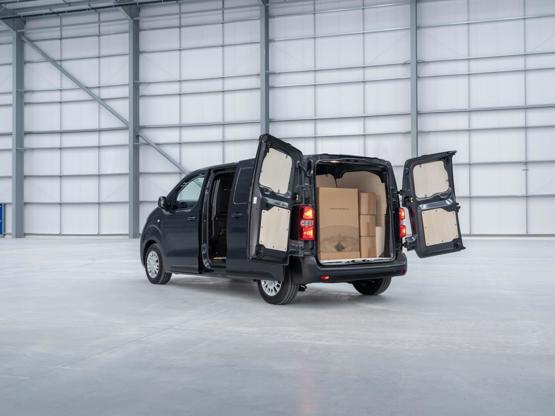
The Proace comes in two body styles; the Short seems to have gone missing, so there are just Medium and Long. Payloads reach up to 1,400kg. However, despite a small roster of vans to choose from, the Proace’s payloads vary wildly from model to model. Double-check the spec sheets when ordering.
The maximum towing capacity is 2,500kg for the diesel and 1,000kg for the electric.
The load bay is practical and easy to access, with wide rear doors and low floor heights across the range. Toyota also offers the Smart Cargo feature, which uses a flip-up passenger seat and bulkhead flap to extend load length. It’s a simple solution that adds flexibility, especially when carrying long, thin loads like poles or fence posts, without compromising safety.
It’s worth noting that, structurally, this is the same body you’ll find on a Vivaro or Expert, so load dimensions are shared. Toyota tells us there’s 5.8m³ of cargo volume in the back of the Medium van, increasing to 6.6m³ in the Long model. There’s just one roof height, a sub-2m roof, which limits cargo height but allows access to most multi-storey car parks and other height-restricted locations.
Inside, the Proace is functional, not flashy. The dash layout is clean and uncluttered, with big buttons and rotary dials that work well for drivers wearing gloves. It separates itself from its Stellantis siblings with a more generous equipment roster, including a 10.0-inch infotainment system with Android Auto and Apple CarPlay. You’ll also find air conditioning, automatic headlights and wipers, cruise control, and rear parking sensors across every model.
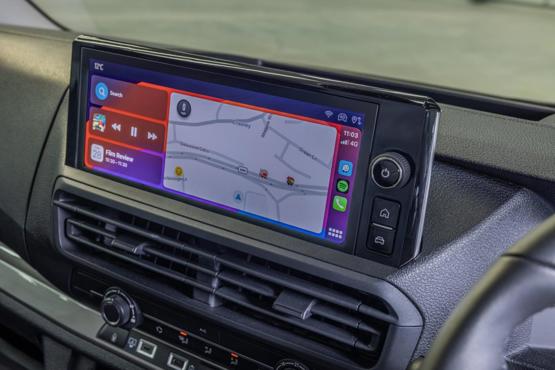
As with its Stellantis siblings, storage is generous, featuring multiple shelves, bins, and cupholders, although the dash-top cubby is left open to prying eyes. Visibility is good thanks to the high driving position and large mirrors, while supportive seats and decent sound insulation aid comfort on longer trips. As ever, the middle seat is only really suited to occasional use.
Toyota’s trump card in the fleet space is its up to 10-year warranty, which applies to all Proace vans, assuming they’re serviced annually at a Toyota dealer — the only important catch. In practice, many fleets won’t keep their vans for a full decade, but the longer warranty still has value; it improves residuals, simplifies forecasting, and gives smaller operators more confidence in their investment.
Toyota’s dealer network, though not as large as Ford or Stellantis, is generally praised for reliability and straightforward customer service. For fleets looking to minimise downtime and admin hassle, that can make a difference.
If you’ve driven a Vauxhall Vivaro or Peugeot Expert recently, you already know most of what the Toyota Proace can do. It’s a solid, well-rounded van with sensible payloads, decent towing capacity, and a powertrain range that covers both diesel traditionalists and early EV adopters.
What gives the Proace a slight edge, especially in a world where the van itself is fundamentally the same, is Toyota’s no-nonsense aftersales package. It’s not the most exciting van on the road, or even the most capable, but for fleets wanting a solid performer with the best warranty and support in its class, the Proace is hard to ignore.
Author:
Phil Huff
Contributor
Specs
| Manufacturer | Toyota |
| Model | Proace L1 Diesel |
| Specification | Toyota Proace L1 Diesel 1.5D 120 Active Van |
| Model Year | 2024.00 |
| Annual VED (Road tax) | £1035 |
| BIK List Price | £29,663 |
| CO2 | 171g/km |
| Insurance Group | N/A |
| CC | 1,499 |
| Fuel Type | |
| Vehicle Type | Medium van |
| Luggage capacity (Seats up) | N/A |
Running Costs
| P11D | £29,663 |
| Cost per mile | 50.28ppm |
| Residual value | £9,850 |
| Insurance group | N/A |
| Fuel Type | |
| Cost per mile | 50.28ppm |
| Fuel | 13.18ppm |
| Depreciation | 33.11ppm |
| Service maintenance and repair | 3.98ppm |
Rivals
Info at a glance
-
P11D Price
£29,663
-
MPG
42.2 -
CO2 Emissions
171g/km -
Payload
N/A -
Load Volume
N/A -
Load Width
N/A -
Load Length
4,980mm

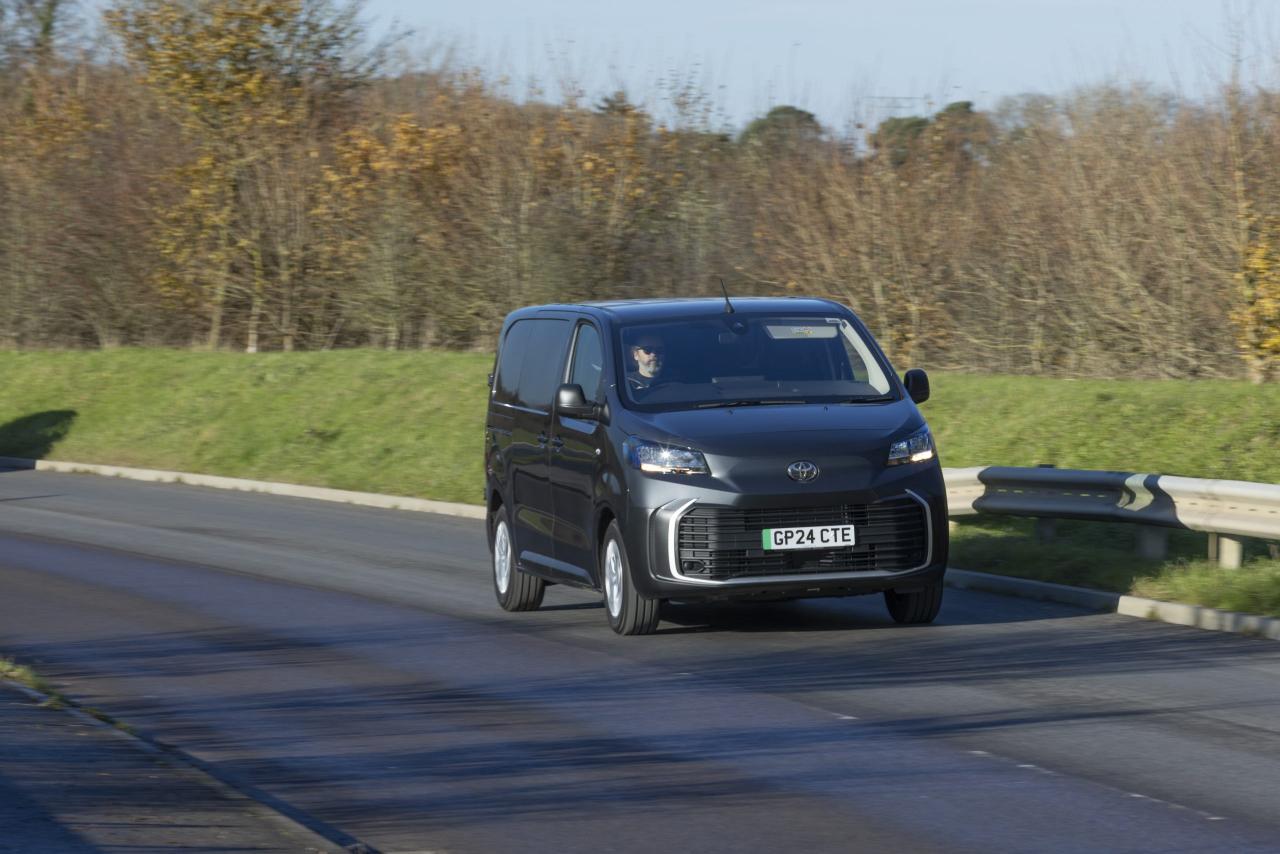








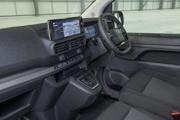


 Diesel
Diesel
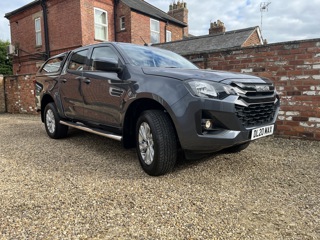

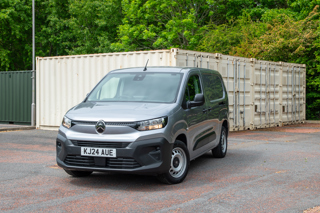








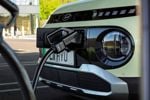




Login to comment
Comments
No comments have been made yet.